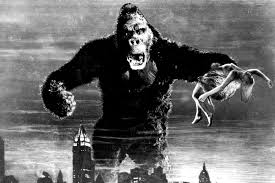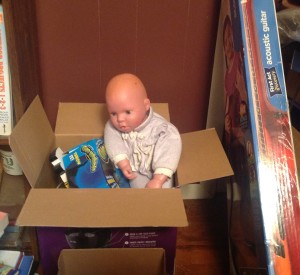Any Fiction Writing 101 course will tell you that setting—where and when a story takes place—is one of the building blocks of writing. Someday, when the world returns to normal or assumes whatever shape the new normal dictates, we writers will begin to use the Covid19 pandemic in our work. I’ve been thinking a lot about how that might look. My work in progress deals with race and the cult of instant celebrity in America. Of all the books I’ve written, it is the most contemporary, the most “now.” There are certain elements to it that could only take place after 2016. It’s set in Cleveland in a cold February over the space of a few weeks. In my head, the story was playing out in winter 2020. Remember those halcyon days of a few months ago? We knew the Coronavirus was out there, but it was still out there—somewhere else. No one knew what “flattening the curve” meant, and six feet was still the length of a standard dog leash or the depth at which one buries a coffin.
Now, the novel is going to have to be set sometime prior to this point—BP (Before Pandemic) rather than AP (After Pandemic). You might think it doesn’t matter, that the pandemic doesn’t need to figure into the lives of a story set in contemporary times. I beg to differ. It’s too big, too widespread, and is lasting too long to ignore.
There are plenty of stories that revolve around a major historical incident. For instance, take Don Robertson’s lovely little novel The Greatest Thing Since Sliced Bread, which takes place on October 20, 1944 in Cleveland, Ohio. Why is the date significant? Because the book revolves around a major industrial explosion at the East Ohio Gas Company on that date that killed 130 people and leveled a one-square-mile area of the city. The explosion roots the story in time and place, however, it was an isolated incident. You could write plenty of novels that take place in Cleveland in 1944 that don’t mention the East Ohio Gas explosion without losing historical accuracy. In historical terms, the explosion is small and isolated.
Let’s take a slightly larger but still isolated example—Northern Ireland and the Troubles. There were decades of violence between Irish nationalists and the British. So much so that in Anna Burns’s remarkable novel Milkman, she never names characters or places. She doesn’t have to. The conflict in Northern Ireland was geographically isolated but of such a lengthy duration that it, for all intents and purposes, became common knowledge. It’s a cultural reference point.
For a larger cultural reference point closer to home, take David Guterson’s lyrical Snow Falling on Cedars. (It came out 25 years ago. I just read it. Thanks, quarantine.) The book takes place in a fictional island off the coast of Puget Sound that is primarily populated by people of white European descent (lots of fine Norwegian and Swedish names among the characters) and a sizable population of Japanese-Americans. Much of the action takes place in the autumn of 1941 and immediately after. We all know that Pearl Harbor was bombed on December 7, 1941. We all know thousands of Japanese-Americans were sent to internment camps as a result. Guterson creates a certain sense of suspense and looming dread as we watch the unsuspecting characters get closer and closer to events that we know will change their lives and change the world around them forever.
Kind of sounds like America in January 2020.
Covid19 is neither small nor isolated. It’s been on the world’s radar since last fall, regardless of when it hit your country, and the end is not in sight. Conventional wisdom has it that there won’t be a vaccine widely available until sometime in 2021. We would have to go back to World War II to find a historical equivalent. Like World War II, Covid19 is all-encompassing in terms of geography, duration, and effect. Let’s go back to The Greatest Thing Since Sliced Bread for a moment. While the war isn’t the primary focus, it’s referred to. You can’t set a novel in the early 1940s without World War II somehow being part of the setting, part of the background. Think about it another way—you can’t have a contemporary novel (or anything that takes place after 2008) without the presence of smartphones. If you have a character who doesn’t have a smartphone in a contemporary novel, you have to account for the absence of a phone in some way. They’re a quasi-Luddite and it’s a character quirk or the phone falls out of a pocket and gets run over by a truck—something. Phones are so ubiquitous that you simply can’t write a contemporary story without using their presence or addressing their absence.
No one knows what the world is going to look like when this pandemic is over. What we do know is that every aspect of our daily lives has already been changed, and it will be changed for a long time. Probably forever. The Pandemic will be one of those literary signifiers, the ticking time bomb. Five or ten years from now, we’ll have stories that reference relatives who died during the Pandemic of 2020, or stories that explore family dynamics during lockdown or isolation. We’ll have stories set in the winter of 2019-2020 and we, as readers, will know what’s coming. We’ll know that these characters will soon be isolated, some will get sick, people will die. Known history will offer foreshadowing for the reader and a useful literary device for writers. I hope we’ll all be around to write it (and read it).


